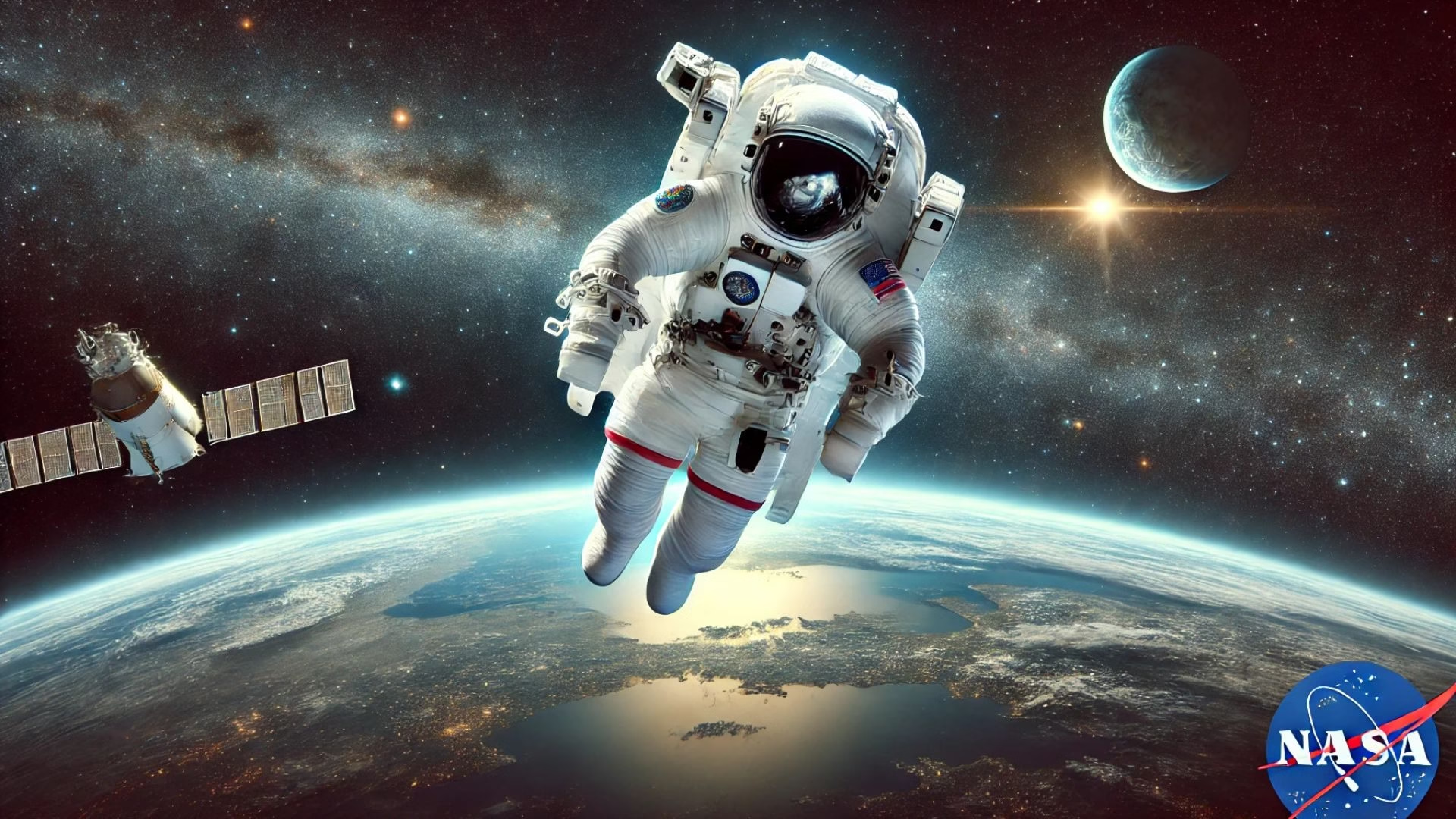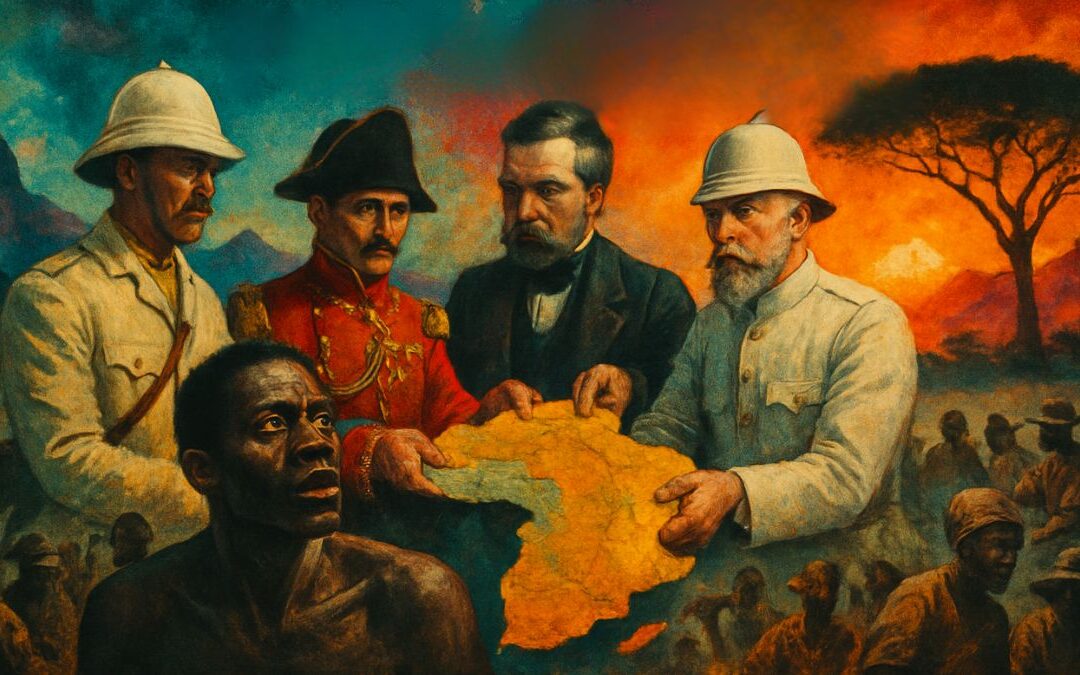- The Ubiquity of Gravity
- The Concept of Free-Fall and Orbital Motion
- Misconceptions and the Role of Microgravity
- The Physics Behind the Floating Sensation
- Real-World Implications for Space Travel
- Debunking the “No Gravity” Myth
- Beyond the Myth: The Beauty of Orbital Mechanics
- Conclusion
- Reading Comprehension Quiz
- Let’s Talk | Listening
- Listening Comprehension Quiz
- Let’s Learn Vocabulary in Context
- Vocabulary Quiz
- Let’s Discuss & Write
- Let’s Play & Learn
It is a common belief that astronauts float in space simply because there is no gravity. At first glance, this notion seems intuitive: if gravity pulls objects toward the Earth, then in its absence, objects should simply drift freely. However, the reality is far more nuanced. In this article, we will explore the physics behind why astronauts appear to float, dispel some widespread misconceptions, and examine the true nature of gravity in space. Along the way, we will discuss how orbital mechanics, free-fall, and the nature of gravitational fields challenge our everyday intuitions.
The Ubiquity of Gravity
Gravity is not a phenomenon that turns off outside Earth’s atmosphere. In fact, gravity is a universal force that permeates the cosmos. Every object with mass exerts a gravitational pull, no matter how far away it is. When we observe astronauts aboard the International Space Station (ISS) or other spacecraft, they are not floating because gravity is absent. Rather, gravity is very much at work—even stronger than it is at the Earth’s surface—but its effects are countered by the orbital motion of the spacecraft.
To understand this, consider that the ISS orbits the Earth at an altitude of about 400 kilometers. At this altitude, gravity is still roughly 90% as strong as it is on Earth’s surface. Thus, gravity is not “turned off” in space; instead, it continuously pulls the spacecraft and its occupants toward Earth. So why do astronauts experience weightlessness?
The Concept of Free-Fall and Orbital Motion
The key lies in the concept of free-fall. An object in free-fall is accelerating under the influence of gravity alone, without any counteracting force such as friction or air resistance. In an orbit, both the spacecraft and its occupants are in a perpetual state of free-fall toward Earth. However, because they are moving forward at a high speed, they keep missing Earth. This creates a continuous state of “falling around” the planet rather than crashing into it.
In essence, the sensation of weightlessness arises because everything inside the spacecraft accelerates at the same rate. Without a normal force from the floor or seat pushing back against their feet—as happens on Earth—astronauts feel no weight. This phenomenon is why astronauts float, even though gravity is still exerting a powerful force on them. Their environment is in a state of constant free-fall, and within this context, the usual cues we associate with gravity are absent.
Misconceptions and the Role of Microgravity
The term “microgravity” is often used to describe the conditions experienced by astronauts. It does not mean that gravity is nearly zero; rather, it indicates that the gravitational forces are nearly uniform across the spacecraft. This uniformity means that any differences in gravitational pull over the dimensions of the ISS, for instance, are minuscule. As a result, objects and people inside appear to float relative to one another.
This condition is sometimes mischaracterized as “zero gravity,” but in truth, it is the state of weightlessness created by free-fall. Even on the surface of the Moon, where gravity is only about one-sixth of that on Earth, astronauts still experience gravity—albeit weaker—allowing them to walk and jump. The ISS, however, is continuously falling toward Earth, and because there is no contact force acting on the occupants (like the ground pushing up against them), they experience a sensation of weightlessness.
The Physics Behind the Floating Sensation
To further unpack this phenomenon, we must delve into the principles of Newtonian physics and Einstein’s theory of general relativity. Newton’s law of universal gravitation tells us that every mass attracts every other mass. The acceleration due to gravity is given by the equation:
g = G·M⁄r²
where G is the gravitational constant, M is the mass of the Earth, and r is the distance from the center of the Earth. At the altitude of the ISS, while r is greater than on the surface, g remains a significant value.
Einstein’s general relativity further refines our understanding by describing gravity as the curvature of spacetime. In this framework, objects in free-fall follow the natural curves (geodesics) of spacetime. For an astronaut in orbit, there is no opposing force to indicate the pull of gravity; hence, they do not feel “pulled” in any direction. Instead, they are moving along a curved path dictated by the geometry of spacetime—a path that creates the impression of floating.
Real-World Implications for Space Travel
The weightlessness experienced by astronauts has profound implications for life in space. It affects everything from how fluids behave to the way bones and muscles respond to prolonged periods of free-fall. Astronauts often undergo rigorous exercise regimens to counteract the muscle atrophy and bone density loss that occur in microgravity conditions. Engineers and scientists design spacecraft interiors to accommodate the challenges of floating objects, ensuring that tools, experiments, and personal belongings remain secure in a free-falling environment.
Moreover, understanding the physics of free-fall is essential for planning space missions. When spacecraft perform maneuvers such as docking or re-entry, precise calculations of gravitational forces, orbital velocities, and the interplay of free-fall are critical to ensuring a safe and successful mission. The study of microgravity also yields valuable scientific data, enabling researchers to conduct experiments that would be impossible under Earth’s gravity.
Debunking the “No Gravity” Myth
Despite clear scientific explanations, the idea that astronauts float because there is no gravity persists in popular culture. This myth may stem from the simplistic notion that space is a void devoid of gravitational pull. However, as we have seen, gravity is an ever-present force—even in the vast emptiness of space, it governs the motions of planets, stars, and galaxies. The term “zero gravity” is thus a misnomer; it is not the absence of gravity but the condition of free-fall that creates the experience of weightlessness.
Understanding this distinction is crucial for appreciating the beauty and complexity of space travel. It reminds us that even our most familiar forces behave in unexpected ways under different conditions. By dispelling the myth of “no gravity,” we open the door to a richer understanding of orbital mechanics and the ingenious methods by which humanity ventures beyond Earth.
Beyond the Myth: The Beauty of Orbital Mechanics
There is an inherent elegance in the way objects move in orbit. The seemingly paradoxical situation in which a powerful gravitational force coexists with a sensation of weightlessness is a testament to the marvels of physics. Astronauts floating in the ISS provide a living illustration of free-fall in action—a dance between gravity and inertia that defines modern space travel. This interplay is not only fundamental to our understanding of the cosmos but also a source of inspiration, as it demonstrates how our universe often defies our everyday intuitions.
The phenomenon of weightlessness also offers unique opportunities for scientific research. Experiments conducted in microgravity can reveal insights into fluid dynamics, combustion, biological processes, and materials science. These studies help us better understand not only how the universe works but also how to improve life on Earth. For example, research on bone density loss in space has led to advances in treating osteoporosis on Earth.
Conclusion
In conclusion, astronauts float in space not because there is no gravity, but because they are in a continuous state of free-fall. Gravity remains a potent force even in orbit, yet the absence of a counteracting normal force results in the sensation of weightlessness. This intricate interplay of gravitational forces and orbital mechanics underpins the daily experiences of astronauts and shapes the design and execution of space missions.
Dispelling the myth of “no gravity” enriches our understanding of the cosmos and highlights the ingenuity required for space travel. As we continue to explore the universe, the lessons learned from the behavior of gravity in space will remain essential to our quest for knowledge. The reality of microgravity challenges us to reconsider our assumptions and to appreciate the complexities of the forces that govern our world. In doing so, we not only gain a deeper insight into space but also foster a greater appreciation for the scientific principles that make exploration possible.
Reading Comprehension Quiz
Let’s Talk | Listening
Listening Transcript: Please do not read the transcript before you listen and take the quiz.
Let’s take a moment to think about the idea that astronauts float in space because there is no gravity. At first, this might seem like a simple explanation you could share at a party. But as we delve deeper, it becomes clear that the true story is much more fascinating and complex. Imagine looking up at the night sky and knowing that the very force that holds you on the ground is still at work out there, even if its effects are not what you expect.
Consider the experience of watching a space shuttle launch. The roar of engines, the vibration, and the immense power all point to the undeniable presence of gravity, which the spacecraft must overcome. Once in orbit, however, everything seems to float. This floating isn’t a miracle or the result of a mysterious absence of gravity; it’s the result of the spacecraft—and everyone inside—being in continuous free-fall. Essentially, they are falling toward Earth, but because they have so much forward velocity, they keep missing it.
Reflect for a moment on the concept of free-fall in your everyday life. Have you ever been on a roller coaster where, for that brief moment at the peak of a drop, you experience a feeling of weightlessness? That sensation is very much like what astronauts experience—only on a much grander, cosmic scale. It’s not that gravity suddenly disappears; it’s that you and everything around you are falling together.
Now, think about how we often simplify complex ideas into catchy phrases. “No gravity” is a phrase that sounds simple and straightforward. Yet, as we’ve learned, it oversimplifies a phenomenon that is governed by the elegant laws of physics. Understanding that gravity is present but that free-fall creates weightlessness invites us to question our intuitive assumptions. This kind of questioning is at the heart of scientific inquiry, and it’s a reminder that the universe is often more intricate than our everyday experiences suggest.
Have you ever wondered why our intuitions about the world can be so misleading? Consider how, as children, we might assume that if we jump off a chair, we float for a moment before landing. In reality, we are in a state of free-fall for those precious seconds. This simple observation can serve as a metaphor for many things in life: not everything is as it appears on the surface, and sometimes the underlying mechanisms are more complex than our immediate perceptions.
One of the most intriguing aspects of this discussion is the idea that space, often thought of as a vast emptiness, is in fact filled with invisible forces. Gravity is everywhere, bending the fabric of spacetime and orchestrating the movements of planets, stars, and galaxies. And yet, when we are inside a spacecraft, our experience is radically different from what we feel on Earth. This paradox is a beautiful illustration of how context matters in science. The same force that makes your morning walk possible also keeps an astronaut in orbit.
As we explore these ideas, I invite you to reflect on your own assumptions. How often do you take common explanations at face value without questioning the underlying principles? The truth, as in the case of space and gravity, is that reality is often more layered and nuanced than our initial impressions suggest. By embracing this complexity, we not only deepen our understanding of the world but also open ourselves up to the wonder that comes from truly knowing how things work.
Moreover, consider the practical side of this discussion. The research into microgravity and free-fall has profound implications for space exploration and technology. From designing spacecraft that can safely transport humans to understanding the effects of prolonged weightlessness on the body, these insights drive innovation in ways that have tangible benefits both in space and on Earth.
Have you ever experienced a moment when a deeper understanding of a phenomenon changed the way you approached a problem? Perhaps it was learning about the principles of physics that made you appreciate the beauty of natural laws, or maybe it was a scientific fact that challenged your previous assumptions. These moments remind us that questioning what we think we know can lead to growth and unexpected insights.
Ultimately, the idea that astronauts float because there is no gravity is a myth that oversimplifies a fascinating interplay of forces. Instead, it is the magic of free-fall—a state where gravity is very much present but its usual effects are masked by the constant acceleration of orbit. This understanding not only enriches our view of space travel but also encourages us to look beyond simple explanations in our everyday lives.
So next time you hear a statement that seems too neat and tidy, ask yourself: what is the deeper truth behind this idea? How might a closer look reveal complexities that challenge our intuitions? Embracing these questions is part of the journey of learning and discovery. And who knows—by doing so, you might just find yourself floating on a sea of new ideas, ready to explore the universe with fresh eyes.
Listening Comprehension Quiz
Let’s Learn Vocabulary in Context
When discussing the idea of astronauts floating in space and the misconception that they do so because there is no gravity, several key vocabulary words help illuminate the subject. One of the first words that comes to mind is free-fall. This term describes the state in which an object is moving solely under the influence of gravity, without any resistance. In everyday life, we rarely experience free-fall outside of controlled scenarios like a roller coaster drop, but in space, free-fall is the norm, giving rise to the sensation of weightlessness.
Another essential term is microgravity. Though it might sound like an absence of gravity, microgravity refers to the condition where gravitational forces are present but are nearly uniform, resulting in an environment where objects appear to float. This word helps bridge the gap between our everyday understanding of gravity and the reality of orbital mechanics. Similarly, the term orbital describes the path an object takes as it revolves around a celestial body, maintained by the balance between its forward momentum and the pull of gravity. Understanding orbital motion is key to grasping why the International Space Station—and its occupants—remain in a constant state of free-fall.
Gravitational is another term that is crucial to this discussion. It refers to the force of attraction between masses, a force that is omnipresent even in the emptiness of space. When we say that gravity is still strong at the altitude of the ISS, we underscore that the sensation of weightlessness is not due to a lack of gravitational pull, but rather to the specific conditions of free-fall. The concept of acceleration further deepens our understanding here. In physics, acceleration is the rate of change of velocity. In orbit, both the spacecraft and its occupants accelerate toward Earth at the same rate, nullifying the sensation of weight.
Moving from the technical to the more abstract, intuition is a word that captures our natural, often simplistic, perceptions of how the world works. Many people intuitively believe that if there is no support underfoot, there must be no gravity, but as we learn, this intuition can be misleading. This is where nuance comes into play—a term that suggests the importance of subtle distinctions and complexities in understanding phenomena. Recognizing nuance allows us to appreciate that the phenomenon of weightlessness is not as simple as “no gravity.”
Another valuable word is phenomenon, which refers to an observable event or occurrence. The weightless environment in space is a fascinating phenomenon that challenges our everyday experiences and demands a more thoughtful explanation. Uniformity is related to this idea, describing a state where conditions are consistent throughout a given space. In the ISS, the nearly uniform gravitational field creates conditions where differences in gravitational pull are so slight that they are imperceptible to the human body.
Inertia is a term borrowed from physics that describes the resistance of any physical object to a change in its state of motion. It is inertia that allows an object in space to keep moving once it has been set in motion, contributing to the dynamics of orbital flight. Relativity—a concept popularized by Einstein—provides us with a framework for understanding how gravity is not just a force but a curvature of spacetime. This broadens our perspective and shows how interconnected the laws of physics really are.
We should also consider misconception, which is a belief that is not based on accurate understanding. The idea that astronauts float because there is no gravity is a common misconception, one that can be corrected with a deeper look at the principles of free-fall and orbital mechanics. Empirical is another important word—it refers to knowledge derived from observation or experiment. Much of what we understand about microgravity comes from empirical research conducted aboard spacecraft.
Finally, the word sensation describes the subjective experience of a physical phenomenon—in this case, the feeling of weightlessness. While gravity is objectively present, the sensation experienced by astronauts is one of floating, a result of the unique conditions in orbit. Together, these words—free-fall, microgravity, orbital, gravitational, acceleration, intuition, nuance, phenomenon, uniformity, inertia, relativity, misconception, empirical, and sensation—not only enrich our vocabulary but also provide us with the tools to articulate and appreciate the complex reality of space travel. By incorporating these terms into our everyday language, we can better understand how the extraordinary becomes comprehensible, and how science bridges the gap between common intuition and the deeper workings of the universe.
Vocabulary Quiz
Let’s Discuss & Write
Discussion Questions:
- In what ways has learning about the physics of free-fall and microgravity challenged your previous assumptions about space?
- How do you think dispelling common misconceptions about gravity can influence public interest in science and space exploration?
- Can you recall an instance when questioning a seemingly simple explanation led you to a deeper understanding of a complex phenomenon?
- How might the principles of free-fall and orbital mechanics apply metaphorically to challenges in your personal or professional life?
- In what ways can everyday language and scientific terminology help bridge the gap between public intuition and advanced scientific concepts?
Writing Prompt:
Reflect on a time when you encountered a common misconception that, upon further investigation, revealed a surprising or more complex truth. Write an essay that begins by describing the misconception, then details the process of learning and questioning that led to a deeper understanding, and concludes by explaining how this experience has influenced the way you approach problem-solving or learning in your daily life. Consider using phrases such as “unveiling the hidden complexity,” “challenging everyday assumptions,” or “a journey from intuition to insight.” Your essay should include specific examples, personal reflections, and an explanation of how this deeper understanding has affected your perspective.










0 Comments